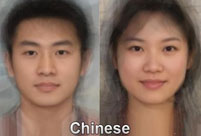 Top 100 beauties in the world!
Top 100 beauties in the world!
 Gallery: Who is the most beautiful one?
Gallery: Who is the most beautiful one?
 If you like autumn, put your hands in the air!
If you like autumn, put your hands in the air!
 Fan Bingbing's "Queen style" in new play
Fan Bingbing's "Queen style" in new play
 Lingerie show at 2014 Miss China
Lingerie show at 2014 Miss China
 J-10 fighters show aerobatic stunts in smog-free sky
J-10 fighters show aerobatic stunts in smog-free sky
 Charming contestants of Shanghai Int’l Model Contest
Charming contestants of Shanghai Int’l Model Contest
 Most amazing chi-pao beauties
Most amazing chi-pao beauties
 7 deadly animal attacks
Russia to launch 70 Proton rockets by 2020: official
7 deadly animal attacks
Russia to launch 70 Proton rockets by 2020: officialWELLINGTON, Nov. 19 -- The mystery surrounding a century-old tragedy linking China and New Zealand has been solved with the discovery of a steamer that sank of the far north of New Zealand in 1902.
The wreck found 21 km off the Hokianga Harbor has been formally identified as the SS Ventnor, which was carrying the remains of 499 Chinese gold miners back to their homeland to be buried by their families according to Chinese custom.
Authorities in both China and New Zealand had been duly notified and the find had been gazetted by Heritage New Zealand, meaning no items could be removed from the wreck without permission, John Albert, chairman of the Ventnor Project Group, said Wednesday.
The wreck was found in about 150 meters of water after a three- year search, he said in a statement.
"Finding the SS Ventnor highlights the significant ties between China and New Zealand," said Albert.
"It is important historically in terms of the early Chinese contribution to New Zealand and culturally in terms of the shared attitudes towards human remains. Since the time of the shipwreck, remains have drifted to shore. These have been interred and their graves cared for by local Maori."
In view of the current visit to New Zealand by Chinese President Xi Jinping, one of the kaumatua (elders) of the Hokianga iwi (tribe), John Klaracich, extended an invitation to the Chinese leadership to visit Hokianga next time they were in New Zealand.
"We would like to give representatives of China the opportunity to personally visit the graves of their countrymen on land and at sea, and pay respects to those pioneers who had not only helped to build our country materially, but brought their rich and ancient culture to our land as well," said Klaracich in the statement.
The SS Ventnor was a British ship, chartered in 1902 by the Cheong Sing Tong, a charity organization led by Dunedin businessman Choie Sew Hoy, to transport the exhumed remains of Chinese men who had died in New Zealand back to their homeland for reburial.
The men, mostly from the Guangdong area, had come to New Zealand to work on the gold fields and the towns that sprung up around it.
As the men -- including Choie Sew Hoy himself -- died, they were buried in New Zealand before being returned to China.
The SS Ventnor picked up the remains mostly in lead-lined coffins in Dunedin, Greymouth and Wellington.
On Oct. 27, 1902, it struck a reef on the Taranaki coast off the west of the North Island, and sank the next day with the loss of 13 lives.
While human remains and occasional flotsam washed up on Hokianga beaches, the location of the wreck had remained a mystery for more than a century.
The story of the Ventnor and the 499 is seen a defining moment in the history of New Zealand's Chinese community.
In 2007, Wong Liu Shueng, a third-generation Chinese New Zealander, and others in the New Zealand Chinese community began to search for the lost bones so they could accord them the rites and customs that had been denied to their families more than a century earlier.
Talks with local iwi, who had collected and buried the bones over the years, resulted in two plaques being unveiled during last year's Qingming (Tomb-Sweeping) festival at the main burial sites to show the Chinese community's gratitude to the local Maori for their care of the dead.
 Hot girls at motor show
Hot girls at motor show  Official trailer of Y-20
Official trailer of Y-20 Photos: Xi Jinping in Fujian
Photos: Xi Jinping in Fujian Standard faces for each countries
Standard faces for each countries China-made military transport aircraft gets ready
China-made military transport aircraft gets ready World Pole Dance Championship in China
World Pole Dance Championship in China Shocking! Photos of Chinese fighters revealed
Shocking! Photos of Chinese fighters revealed 59-year-old Liu Xiaoqing still looks stunning
59-year-old Liu Xiaoqing still looks stunning  In pics: PLA stages live-fire drill in NE China
In pics: PLA stages live-fire drill in NE China  Top 10 most dangerous jobs in the world
Top 10 most dangerous jobs in the world  Top 10 fifth generation jet fighters in the world
Top 10 fifth generation jet fighters in the world Top 10 Chinese goddesses
Top 10 Chinese goddesses  Top 20 hottest women in the world in 2014
Top 20 hottest women in the world in 2014 Top 10 pure beauties in showbiz
Top 10 pure beauties in showbiz  Top 10 world's highest-paid models 2014
Top 10 world's highest-paid models 2014 The most gorgeous Chinese women
The most gorgeous Chinese women Top 10 most handsome faces in Asia
Top 10 most handsome faces in AsiaDay|Week|Month